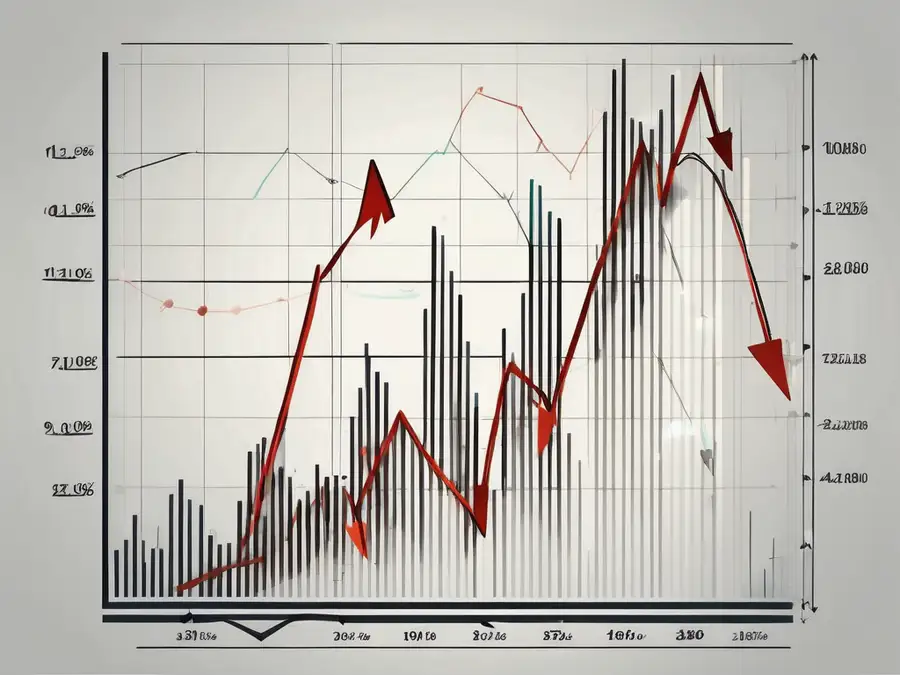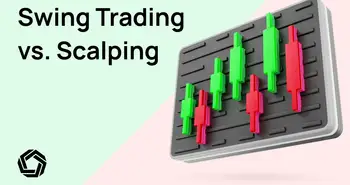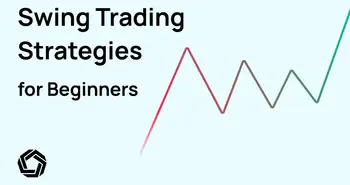The Top Swing Trading Indicators

Swing trading is a popular strategy used by traders to capitalize on short-term price movements in the financial markets. Unlike long-term investing, swing traders focus on capturing shorter-term trends, typically holding positions for a few days to a few weeks. To successfully implement swing trading, it is crucial to use the right indicators that can help identify potential entry and exit points. In this comprehensive guide, I will explain the key aspects of swing trading indicators and provide valuable insights to enhance your trading strategy.
Understanding Swing Trading
The Basics of Swing Trading
Swing trading involves taking advantage of market swings or price fluctuations to generate profits. Traders aim to capture the “swings” in the price as it moves up and down within a defined range. This approach is highly flexible, allowing traders to adapt to different market conditions and timeframes.
One key aspect of swing trading is the concept of “holding period,” which refers to the length of time a trader holds a position before selling it for a profit. Swing traders typically hold positions for a few days to several weeks, as they seek to capitalize on short- to medium-term price movements. This strategy requires a keen understanding of technical analysis and market trends to identify opportune entry and exit points.
The Importance of Swing Trading Indicators
Swing trading indicators play a vital role in identifying potential trading opportunities and confirming price trends. They assist traders in making informed decisions based on technical analysis. By analyzing past price data, these indicators provide valuable insights into market conditions and help traders anticipate future price movements.
Popular swing trading indicators include moving averages, relative strength index (RSI), and Bollinger Bands. Moving averages help traders smooth out price data to identify trends, while RSI measures the speed and change of price movements to determine overbought or oversold conditions. Bollinger Bands, on the other hand, consist of a middle band and two outer bands that expand and contract based on price volatility, aiding traders in assessing potential price breakouts or reversals.
Types of Swing Trading Indicators
Moving Averages
Moving averages are widely used swing trading indicators that help smooth out price fluctuations and identify trend reversals. The two most commonly used moving averages are the simple moving average (SMA) and the exponential moving average (EMA). Traders often look for the intersection of moving averages or use them to determine support and resistance levels.
Traders often use moving averages in conjunction with other technical indicators to confirm trading signals. For example, a common strategy is to look for the price to cross above a moving average as a signal to buy, and below a moving average as a signal to sell. Moving averages can also be used to identify the overall trend direction, with traders focusing on buying opportunities when the price is above the moving average and selling opportunities when the price is below.
Relative Strength Index (RSI)
The RSI is a momentum oscillator that measures the strength and speed of price movements. It helps traders identify overbought and oversold conditions in the market. When the RSI is above 70, the market is considered overbought, indicating a potential reversal. Conversely, when the RSI is below 30, the market is oversold, suggesting a possible upward trend.
Traders often use the RSI in combination with other technical indicators to increase the accuracy of their trading signals. For example, some traders look for divergence between the RSI and price movements, where the RSI is moving in the opposite direction of the price, as a sign of a potential trend reversal. The RSI can also be used to confirm the strength of a trend, with sustained RSI readings above 50 indicating a strong uptrend and readings below 50 suggesting a strong downtrend.
Stochastic Oscillator
The stochastic oscillator is another popular indicator used in swing trading. It helps identify potential turning points in the market by comparing a security's closing price to its price range over a specific period. The stochastic oscillator consists of two lines: %K and %D. Traders look for crossovers between these lines or divergence from price movements to generate buy or sell signals.
Traders often use the stochastic oscillator to confirm signals generated by other indicators. For example, if a security is showing a potential trend reversal based on a moving average crossover, traders may look to the stochastic oscillator to confirm the timing of their entry or exit. The stochastic oscillator can also be used to identify overbought and oversold conditions, similar to the RSI, with readings above 80 indicating overbought conditions and readings below 20 suggesting oversold conditions.
How to Use Swing Trading Indicators
Interpreting Indicator Signals
Understanding and interpreting indicator signals is crucial for successful swing trading. It is essential to combine technical analysis with other factors such as market sentiment and fundamental analysis to improve accuracy. Indicators serve as tools to provide insights, but it is important not to rely solely on them.
Combining Multiple Indicators
A common practice among swing traders is to use multiple indicators to confirm trends and minimize false signals. By combining different indicators, traders can gain a more comprehensive understanding of market conditions. However, it is important to avoid over-complicating the analysis with too many indicators, as this can lead to confusion.
Common Mistakes in Using Swing Trading Indicators
Over-reliance on Indicators
One common mistake among novice traders is over-reliance on indicators without considering other essential factors. It is crucial to understand that indicators are not infallible, and market conditions can change rapidly. It is essential to use indicators as a tool rather than a guaranteed source of trading signals.
Ignoring Market Trends
Swing traders must always consider the overall market trend before making trading decisions. Even the most accurate indicators may fail if they are used against the prevailing market direction. By aligning trades with the prevailing trend, traders improve their odds of success and reduce the risk of false signals.
Optimizing Your Swing Trading Strategy
Adjusting to Market Volatility
Markets can experience periods of high volatility, which can impact swing trading strategies. During volatile periods, it is crucial to adjust your strategy by using wider stop-loss orders and being more cautious with position sizes. Adapting to market conditions is essential for long-term success in swing trading.
Balancing Risk and Reward
Swing trading involves carefully managing risk and reward. It is important to set realistic profit targets and stop-loss levels to protect against excessive losses. Risk management is a key aspect of successful swing trading and can help ensure longevity in the markets.
As an expert swing trader, I can attest to the profitability and excitement this strategy offers. Over my years of experience, I have witnessed countless success stories but have also learned from my fair share of mistakes. One piece of advice I can offer is to continually educate yourself and stay up-to-date with market trends and indicators. By doing so, you increase your chances of success and remain ahead of competitors.
Frequently Asked Questions
What is swing trading?
Swing trading is a trading strategy that aims to capture shorter-term price movements by holding positions for a few days to a few weeks.
Why are swing trading indicators important?
Swing trading indicators help identify potential entry and exit points, confirm price trends, and provide insights into market conditions.
Which indicators are commonly used in swing trading?
Commonly used swing trading indicators include moving averages, relative strength index (RSI), and stochastic oscillator.
How should I interpret indicator signals?
Indicator signals should be interpreted in conjunction with other factors such as market sentiment and fundamental analysis to improve accuracy.
What are common mistakes to avoid when using swing trading indicators?
Common mistakes include over-reliance on indicators and ignoring market trends. It is important to use indicators as tools and consider the overall market direction.
How can I optimize my swing trading strategy?
To optimize your swing trading strategy, adjust to market volatility and balance risk and reward. Adapting to changing market conditions and practicing proper risk management is crucial.
Ready to elevate your swing trading strategy with cutting-edge technology? Look no further than Morpher, the revolutionary trading platform that combines the power of blockchain with zero fees, infinite liquidity, and the ability to trade a vast array of assets. Whether you're looking to invest in fractional shares, short sell without interest fees, or leverage your trades up to 10x, Morpher offers a unique and flexible trading experience tailored to the modern investor. Embrace the future of trading with Morpher's non-custodial wallet, ensuring safety and control over your investments. Sign Up and Get Your Free Sign Up Bonus today to start trading like never before!

Disclaimer: All investments involve risk, and the past performance of a security, industry, sector, market, financial product, trading strategy, or individual’s trading does not guarantee future results or returns. Investors are fully responsible for any investment decisions they make. Such decisions should be based solely on an evaluation of their financial circumstances, investment objectives, risk tolerance, and liquidity needs. This post does not constitute investment advice.

Painless trading for everyone
Hundreds of markets all in one place - Apple, Bitcoin, Gold, Watches, NFTs, Sneakers and so much more.

Painless trading for everyone
Hundreds of markets all in one place - Apple, Bitcoin, Gold, Watches, NFTs, Sneakers and so much more.









